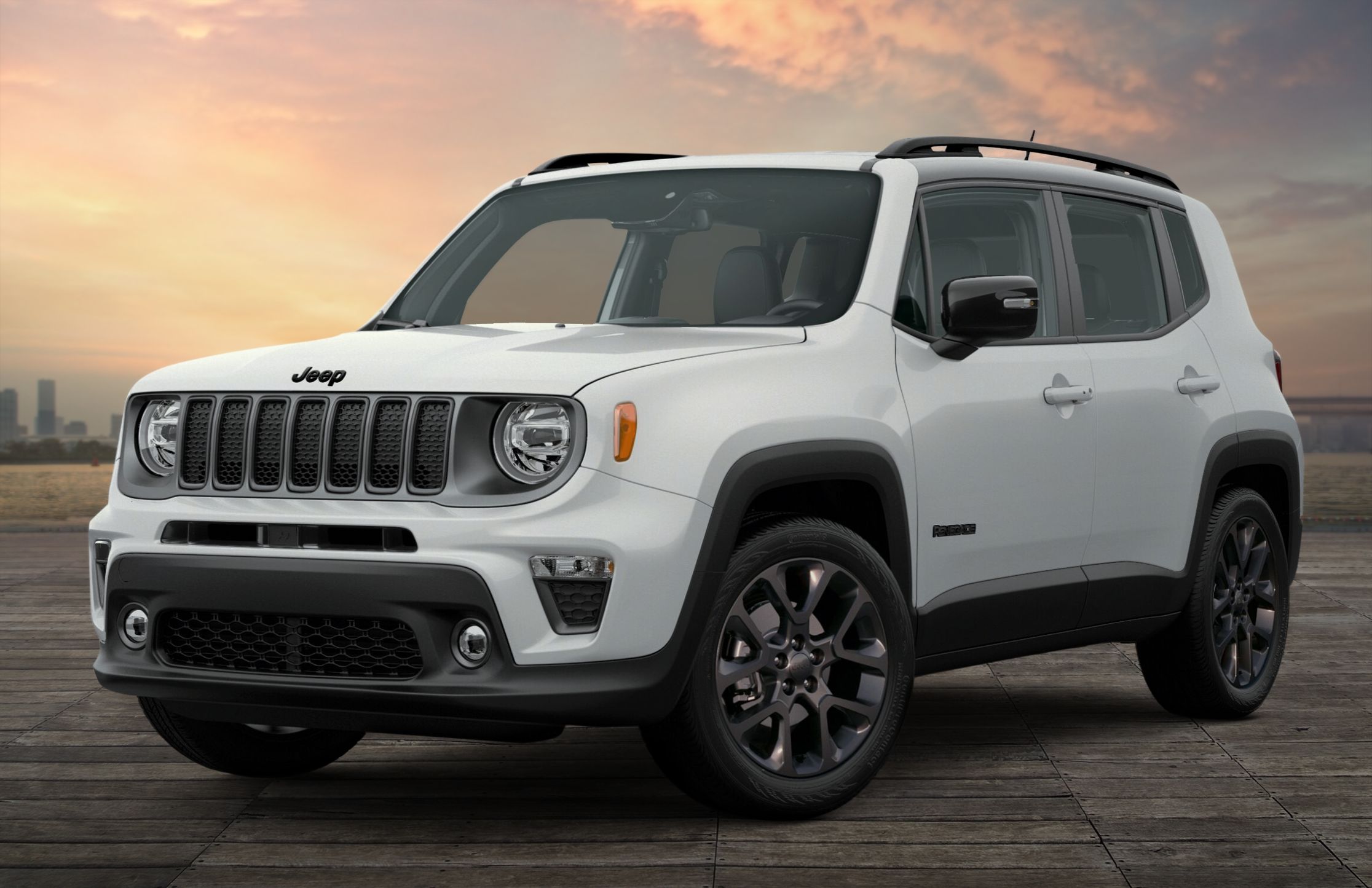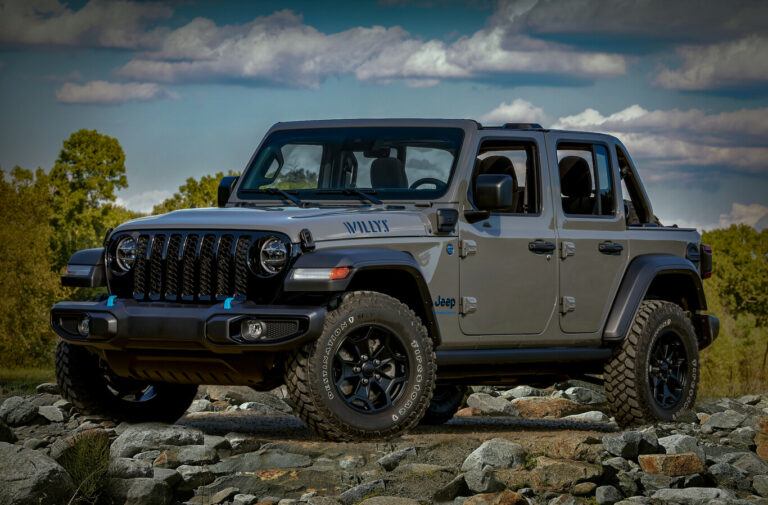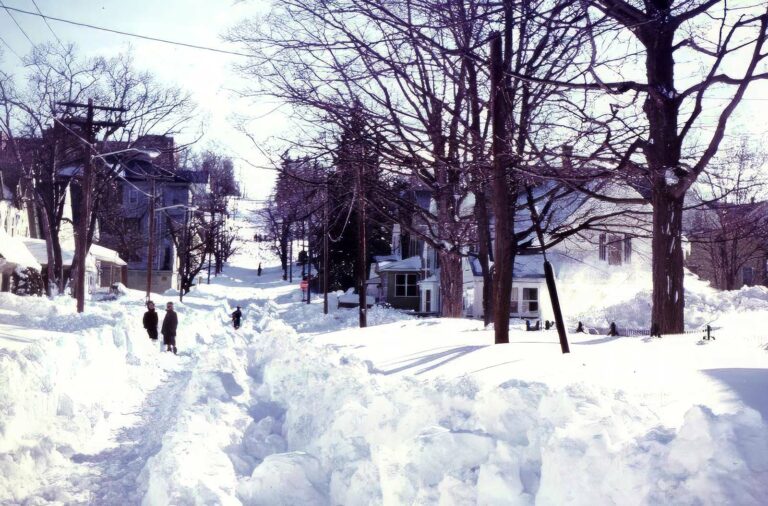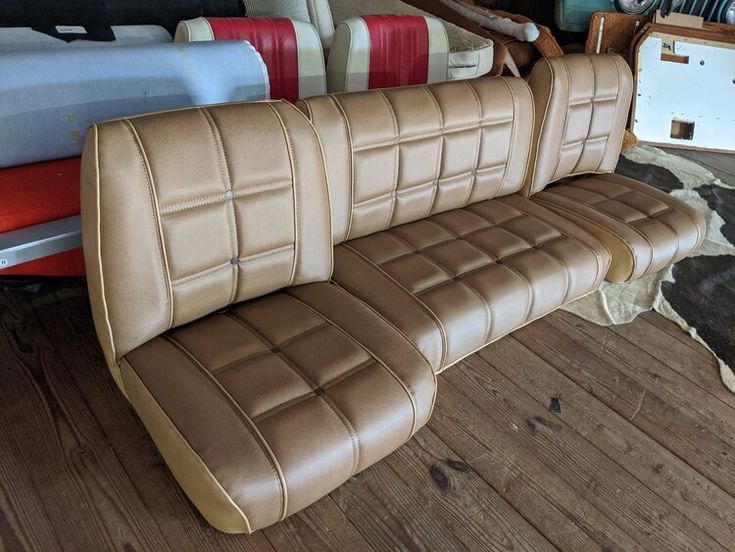Jeep TJ Chassis For Sale: The Foundation of Your Ultimate Off-Road Dream
Jeep TJ Chassis For Sale: The Foundation of Your Ultimate Off-Road Dream jeeps.truckstrend.com
The Jeep Wrangler TJ, produced from 1997 to 2006, holds a special place in the hearts of off-road enthusiasts and automotive customizers alike. Known for its coil-spring suspension, robust drivetrain options, and classic Jeep aesthetics, the TJ remains one of the most popular platforms for modifications, restorations, and custom builds. At the very core of every TJ lies its chassis – the foundational frame that dictates structural integrity, ride quality, and ultimately, the vehicle’s very existence. When you see "Jeep TJ Chassis For Sale," it signifies an opportunity: whether to breathe new life into a rusted classic, recover from severe accident damage, or lay the groundwork for an extreme custom creation.
This article serves as a comprehensive guide for anyone considering purchasing a Jeep TJ chassis. We’ll delve into why these frames are sought after, what to look for, the different types available, and critical considerations to ensure your project starts on a solid foundation.
Jeep TJ Chassis For Sale: The Foundation of Your Ultimate Off-Road Dream
Understanding the Jeep TJ Chassis
At its essence, a Jeep TJ chassis is the vehicle’s bare ladder frame. It’s the sturdy metal skeleton to which the engine, transmission, axles, suspension, steering, and eventually the body tub and interior components are all attached. Unlike unibody vehicles, the TJ’s body-on-frame construction makes frame replacement or repair a viable, albeit significant, undertaking.
The TJ chassis is primarily made of steel, designed to withstand the rigors of off-road driving. However, over time, these frames are susceptible to common issues such as rust, especially in areas exposed to road salt or moisture traps like the skid plate mounts, control arm mounts, and the rear sections near the bumper. Accidents can also cause bends, cracks, or twists that compromise the frame’s integrity, making a replacement a safer and often more economical solution than extensive repairs.
For many, acquiring a bare TJ chassis is the first step in a dream build. It allows for a fresh start, free from the hidden damage or pervasive rust that might plague an existing vehicle. It’s the ultimate blank canvas for a custom rock crawler, an overland expedition vehicle, or a faithful restoration.
Why Buy a Jeep TJ Chassis? Common Scenarios
The decision to purchase a standalone Jeep TJ chassis is usually driven by one of several compelling reasons:

Full Restoration Projects: Many classic TJs suffer from extensive rust on their original frames, particularly in regions with harsh winters. While the body, engine, or axles might still be salvageable, a compromised frame is a deal-breaker for safety and longevity. A solid replacement chassis allows for a true "nut and bolt" restoration, ensuring the vehicle’s foundation is as good as new.
-
Frame Repair or Replacement: If a TJ has been involved in a severe accident that twisted or bent its frame beyond repair, or if rust has created holes that structurally weaken the vehicle, a chassis replacement is often the most practical and safe solution. Repairing severely damaged frames can be costly and may never fully restore the original integrity.
-
Custom Builds & Swaps: For enthusiasts looking to build a highly specialized off-road machine – perhaps a stretched wheelbase buggy, a V8 engine swap, or a dedicated rock crawler – starting with a bare frame provides maximum flexibility. It allows for custom fabrication, reinforcement, and modifications to suit extreme demands without the constraints of an existing, fully assembled vehicle.
-
Donor Vehicle Utilization: Sometimes, a complete TJ might be purchased for its good engine, transmission, or axles, but its body or frame is beyond repair. Conversely, a TJ with a pristine frame but a wrecked body or seized engine could serve as an ideal donor for a frame swap.

-
Legal Compliance and Safety: A structurally sound chassis is paramount for vehicle safety and legal registration. Buying a good condition chassis ensures your build will be roadworthy and compliant with inspection requirements.

Types of Jeep TJ Chassis Available
When searching for a Jeep TJ chassis, you’ll generally encounter three main categories, each with its own advantages and considerations:
-
Used/Salvaged OEM Chassis:
- Description: These are frames pulled from existing TJ Wranglers, often from salvage yards, private sellers, or donor vehicles. Their condition varies wildly, from heavily rusted and bent to surprisingly well-preserved.
- Pros: Generally the most affordable option. Original fitment for all OEM components.
- Cons: Condition is the biggest variable. Requires thorough inspection for rust, bends, cracks, and previous repairs. May need significant cleaning, sandblasting, and rust treatment before use. Legal status (VIN) can be a concern.
-
Refurbished/Blasted/Painted Chassis:
- Description: These are used OEM frames that have undergone a restoration process. Typically, they are sandblasted to bare metal, inspected for damage, repaired if necessary, and then primed and/or painted with a durable protective coating (e.g., POR-15, epoxy primer).
- Pros: Much less prep work for the buyer. Visually appealing and often structurally sound (assuming quality refurbishment). Saves significant time and effort.
- Cons: More expensive than raw used frames. The quality of the refurbishment can vary, so inquire about the process and warranty (if any).
-
Aftermarket/Custom Chassis:
- Description: Brand-new frames manufactured by specialized companies (e.g., Chassis Unlimited, Savvy Off Road, MetalCloak, or smaller fabricators). These can be exact replicas of the OEM frame or modified versions designed for specific purposes (e.g., stretched wheelbase, heavier duty, specific suspension geometry).
- Pros: Brand new, no rust or hidden damage. Often stronger than OEM due to thicker steel or improved designs. Ideal for extreme custom builds.
- Cons: Most expensive option by far. May require more custom fabrication to fit standard OEM components or specific body mounts if it’s a modified design. Availability can be limited.
Key Considerations When Purchasing a TJ Chassis
Buying a bare chassis is a significant investment in time and money. Careful consideration of these factors will save you headaches down the road:
- Condition is Paramount: This cannot be stressed enough. Inspect the frame meticulously for:
- Rust: Pay special attention to common rust points: skid plate mounts, control arm mounts (upper and lower), body mounts (especially the rearmost ones), and the frame rails near the rear bumper. Use a small hammer or screwdriver to gently tap or probe suspicious areas; if it crumbles or goes through, it’s too rusted.
- Bends/Twists: Look down the frame rails from front to back to check for straightness. Any visible bends or twists indicate accident damage.
- Cracks: Inspect around all welded areas, mounting points, and stress points for hairline cracks.
- Previous Repairs: Look for inconsistent welds, patched sections, or areas that look different from the rest of the frame. Poorly executed repairs can be a major safety hazard.
- Legal Standing: VIN and This is the most critical aspect for any street-legal build.
- VIN (Vehicle Identification Number): The VIN is typically stamped into the passenger side frame rail near the front. It must be clear, readable, and intact.
- Title/Bill of Sale: Ensure the seller can provide a clear title or a proper bill of sale that includes the VIN. In many states, if you swap a frame, you must transfer your original VIN to the new frame, or go through a "reconstructed" or "assembled" vehicle titling process, which can be complex and varies by state. Never buy a chassis without a verifiable VIN and proper documentation if you intend to register it for road use.
- Completeness: What exactly is included with the sale? Is it just the bare frame rails and crossmembers? Are the body mounts, suspension mounts (e.g., control arm brackets, track bar mounts), and steering box mounts intact? The more complete it is, the less fabrication work you’ll need to do.
- Shipping and Transportation: Frames are large, heavy, and awkward to move. Factor in the cost and logistics of transportation. Local pickup with a large trailer or flatbed is ideal. Otherwise, you’ll need to arrange LTL (Less Than Truckload) freight, which can be expensive. Get quotes before committing to a purchase.
- Seller Reputation: Purchase from reputable sources like established salvage yards, specialty Jeep shops, or well-reviewed private sellers. Avoid sketchy deals.
The Buying Process: A Step-by-Step Guide
- Define Your Needs: Determine your project scope. Do you need a pristine, rust-free frame for a show vehicle, or is a moderately rusted but structurally sound frame acceptable for a trail rig?
- Research and Locate Sellers: Check online marketplaces (eBay, Craigslist, Facebook Marketplace), specialized Jeep forums, dedicated salvage yards, and custom fabrication shops. Expand your search geographically if necessary, as rust-free frames are more common in arid climates (e.g., Southwest US).
- Inspect Thoroughly:
- In Person is Best: If at all possible, inspect the chassis in person. Bring a powerful flashlight, a small hammer or screwdriver, and a magnet (to check for bondo over rust).
- Virtual Inspection: If an in-person visit isn’t possible, request high-resolution, detailed photos and videos of every angle, especially common rust spots and the VIN. Ask for specific measurements if you suspect bends.
- Verify Legality: Confirm the VIN is clear and that the seller has the proper documentation (title or bill of sale). Discuss the process for transferring ownership and ensuring legal registration in your state.
- Negotiate Price: Based on condition, completeness, and market demand, negotiate a fair price.
- Arrange Transport: Once purchased, coordinate pickup or freight shipping. Ensure the frame is properly secured for transport.
- Post-Purchase Steps: Once the chassis arrives, perform another thorough inspection. Clean it, sandblast it (if not already done), apply rust-preventative coatings, and plan your build strategy.
Common Challenges and Solutions
- Challenge: Extensive Rust:
- Solution: Avoid frames with widespread, deep, or flaky rust, especially in critical structural areas. If minor surface rust, sandblasting and rust-inhibiting paint (like POR-15) can protect it. For localized holes, professional welding and patching may be viable, but be wary of too many repairs. Consider spending more on a rust-free frame from a dryer climate.
- Challenge: Damaged or Illegible VIN:
- Solution: Do not purchase this chassis if you intend to register the vehicle for road use. A damaged or missing VIN will cause significant legal and registration headaches. This type of frame is only suitable for off-road-only projects where no registration is required.
- Challenge: High Shipping Costs:
- Solution: Prioritize local sellers. If buying long-distance, get multiple LTL freight quotes. Consider splitting freight costs with other buyers if possible, or planning a road trip with a suitable tow vehicle.
- Challenge: Finding the "Perfect" Chassis:
- Solution: Patience is key. The ideal rust-free, straight, and well-documented chassis may take time to find. Be prepared to travel or pay a premium for it. Adjust your expectations based on your budget and willingness to perform repairs.
Price Table: Estimated Jeep TJ Chassis Costs
Prices for Jeep TJ chassis vary significantly based on condition, completeness, location, and seller. The table below provides general estimated ranges in USD:
| Chassis Type | Condition / Description | Estimated Price Range (USD) | Key Considerations |
|---|---|---|---|
| Used OEM Chassis | Heavily rusted, bent, or accident-damaged | $200 – $500 | Primarily for cutting sections, extreme budget builds, or significant repair work. High risk, often no title. |
| Used OEM Chassis | Moderate surface rust, minor dings, no structural damage | $500 – $1,500 | Most common. Requires cleaning, blasting, and rust treatment. Good for restoration. VIN and title status critical. |
| Used OEM Chassis | Minimal rust, excellent condition (Southern/Western frame) | $1,500 – $2,500+ | Premium used chassis. Less prep work needed. Higher demand. Often comes with clear title. |
| Refurbished/Blasted OEM | Sandblasted, inspected, primed, or painted | $2,000 – $3,500+ | Ready for component installation. Saves significant prep time. Quality varies by refurbisher. Verify work. |
| Aftermarket Chassis | Brand new, bare frame (e.g., Chassis Unlimited, Savvy) | $3,500 – $6,000+ | Zero rust, often stronger/customizable. May require more fabrication for OEM components. Most expensive option. |
| Factors Affecting Price: | Rust level, presence of bends/cracks, completeness (body mounts, suspension mounts), VIN status, location, seller. |
Frequently Asked Questions (FAQ)
Q: Can I just buy a chassis and build a new Jeep around it?
A: Yes, this is a very common reason for purchasing a standalone chassis. You will need to transfer your existing VIN from your old Jeep to the new frame, or follow your state’s procedures for "reconstructed" or "assembled" vehicles, which can be complex.
Q: How do I know if a chassis has too much rust?
A: Look for flaking, large holes, or soft spots where you can easily poke through with a screwdriver or pick. Pay particular attention to areas where water and dirt collect, such as body mounts, control arm mounts, and skid plate attachment points. Surface rust is manageable; structural rust is a red flag.
Q: Is it legal to replace my Jeep’s frame?
A: Generally, yes, but the legality and process vary by state. The critical step is properly dealing with the VIN. You usually need to transfer your original VIN to the new frame or register the vehicle as a "reconstructed" or "assembled" vehicle. Always check your local Department of Motor Vehicles (DMV) regulations before starting the project.
Q: What’s the difference between a TJ and an LJ chassis?
A: An LJ (TJ Unlimited) chassis is 10 inches longer than a standard TJ chassis (103-inch wheelbase vs. 93-inch). They are not interchangeable without significant modification to the body and driveline.
Q: What parts usually come with a bare chassis?
A: Typically, just the main frame rails and welded crossmembers. Sometimes body mounts and basic suspension mounts are included. Axles, engine, transmission, steering components, and the body tub are almost always sold separately.
Q: Should I buy a chassis online without seeing it in person?
A: It’s highly risky. If an in-person inspection isn’t possible, demand an extensive set of detailed, high-resolution photos and videos of every angle, especially common rust spots, any repairs, and the VIN. Buy from reputable sellers with good feedback and clear return policies if you must.
Q: What are the biggest challenges with a frame swap?
A: Disassembly and reassembly of all components, dealing with rusted or seized bolts, ensuring proper alignment of the body and driveline, potential custom fabrication for specific components, and most importantly, navigating the legal and VIN requirements for registration. It’s a project that requires significant mechanical aptitude, tools, and patience.
Conclusion
The Jeep TJ chassis for sale market offers a unique opportunity for enthusiasts to embark on ambitious projects, from meticulous restorations to wild custom builds. While the prospect of a bare frame might seem daunting, it provides the ultimate clean slate, ensuring your beloved TJ or future creation has a rock-solid foundation.
The key to a successful purchase lies in diligent research, thorough inspection, and a clear understanding of the legal implications, particularly regarding the VIN and title. By taking the time to find a well-preserved, properly documented chassis and addressing potential challenges proactively, you can ensure that your journey into the world of custom Jeeps begins on the most stable footing possible, ready to tackle any trail or showcase any vision you can imagine.






